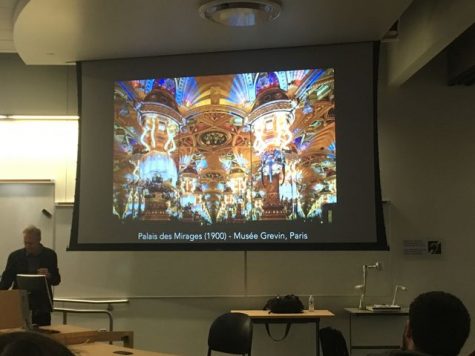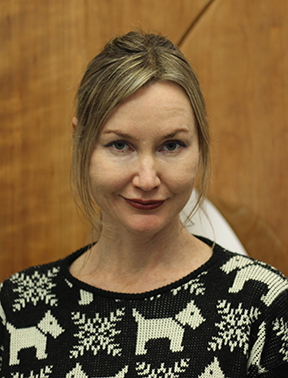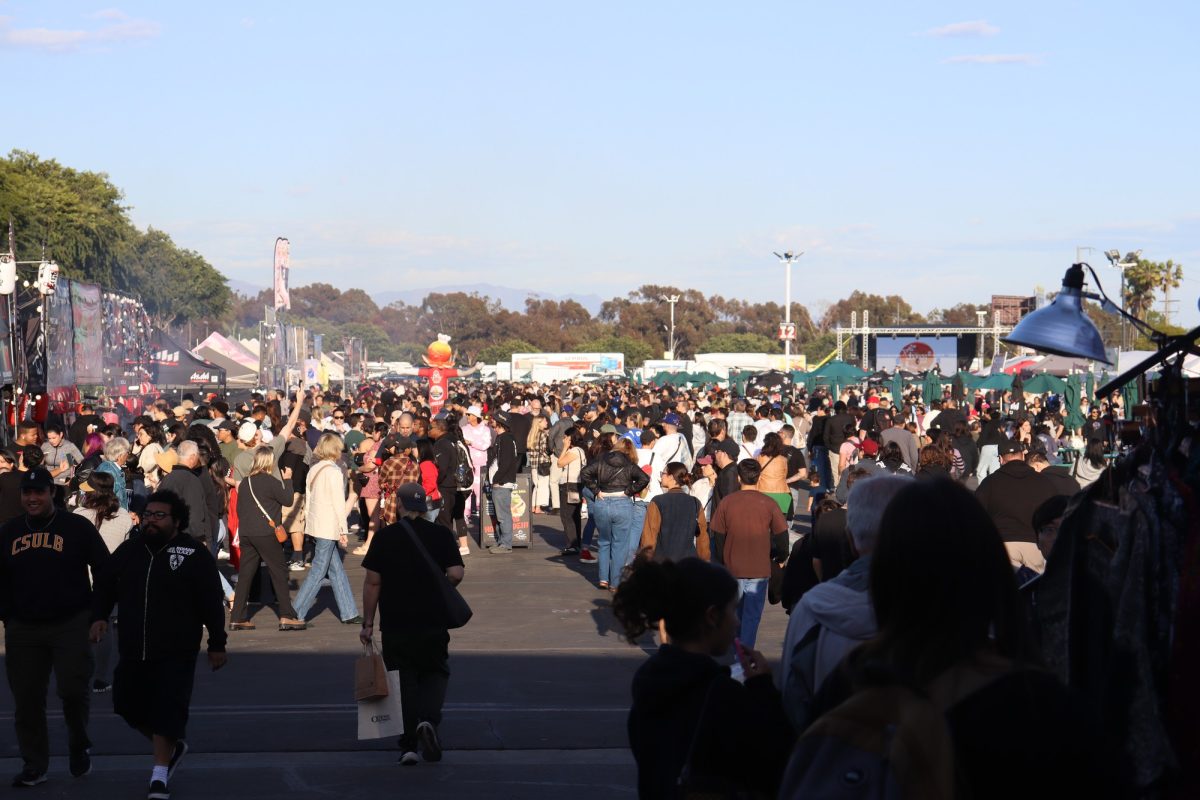
Professor Erkki Huhtamo bringing Pokémon Go to life.
For the gamers and the curious, Cerritos College hosted UCLA Professor Errki Huhtamo on April 11th, who presented ‘Kaleidoscopes, Pokémon Go and Media Manias’ in the Fine Arts Department.
Huhtamo is one of the founders of an emerging approach to media studies known as media archaeology.
He drew parallels between the early 19th century “Kaleidoscomania” and the recent “Pokémon Go Mania” as case studies.
Huhtamo also pointed out that there have been quite a few mania’s over the millennia including “Tulipmania” in Holland, pyromania and kleptomania amongst the privileged class– something that has resurfaced in recent years with several Hollywood actors.
Huhtamo became interested in the Pokemon Go mania when he observed students all over UCLA chasing after something invisible in large groups.
He attempted to converse with the participants but said they were difficult to engage with because they were in such hot pursuit of the latest Pokemonster.
Huhtamo noted how this digital craze affected people’s daily lives in different ways. In some cases, mothers were thrilled because now their children wanted to go on long walks with them.
In others, mothers who previously didn’t really leave the house suddenly felt motivated to get up off of the couch.
Huhtamo said, “Media archaeology is for me kind of like a way of, I often think about time travel, it’s almost like I’m traveling in some kind of strange, futuristic time capsule, up and down time, stopping at different moments. So it’s kind of a like a dialogical and cross-disciplinary way of thinking that emphasizes continuities, links between ideas from different times.”
Huhtamo’s central concept is ‘topos’ which Webster’s Dictionary defines as “A traditional or conventional literary or rhetorical theme or topic.”
Huhtamo describes it as “a multi-level idea that keeps on coming back and disappearing, coming back in different contexts, over and over again.”
In other words, Pokemon Go was simply the latest vessel for something in us that is prone towards manias.
Huhtamo shared images of the kaleidoscope craze that swept across Europe in the 1800s which depicted crowds of people consumed with looking into kaleidoscopes while in the background comical scenarios unfold.
Huhtamo said, “This kaleidoscope mania, in a funny way, is actually one of the foundational ideas behind my work on media archaeology, so my work has actually evolved for a long time already.”
Huhtamo drew the link between that and virtual reality saying, “Many people seem to be thinking that this virtual reality that has been so much talked about in the past few years is something totally new, so media archaeology in a way, goes against this kind of ideology.”
Psychology major, Frank Zaragoza who was in the audience, was not a Pokémon Go user, but said, “I used to play Pokémon on my GameBoy obsessively when I was in middle school in the 90s and if that was around back then, I would have been out there for sure.”
The talk was offered as part of his class, Art 113, which is an interdisciplinary art and technology course being offered by professor James MacDevitt who is also working on a book about the course which will discuss the integration of art and technology and advocate for the re-integration of art into STEM.









